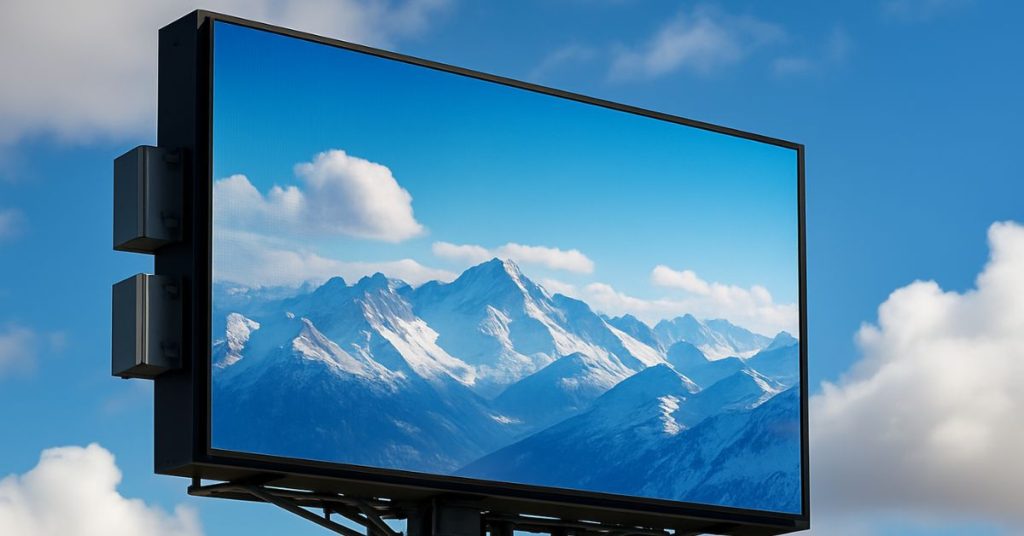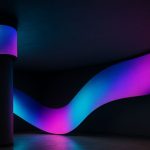When it comes to creating impact in open environments, think city billboards, airport terminals, stadiums, or retail exteriors, outdoor LED displays are in a league of their own. But beyond the dazzling visuals, what really makes an LED video wall perform outdoors is how it handles three crucial elements: brightness, power efficiency, and weatherproofing. Let’s face it: not all LED displays are made for the outdoors.
You can’t just take a screen, put it outside, and expect it to shine through sunlight, resist pouring rain, and last for years. That’s where outdoor LED displays come in, and they’re built for way more than just looking bright.
In this article, we’re breaking down exactly what makes an outdoor display perform the way it should. We’re talking brightness, power handling, and weatherproofing. These aren’t just technical details. They’re the make-or-break factors that define whether your digital signage is a long-term asset or a costly problem.
So, if you’re exploring LED video wall solutions for storefronts, stadiums, corporate buildings, or city streets, here’s what you really need to know.
Brightness: Because Sunlight Doesn’t Take a Break
Outdoor spaces are unpredictable. One minute it’s cloudy. Next, there’s direct sunlight hitting your screen. Indoors, displays get away with 600 to 1200 nits of brightness. But outdoors? That’s nowhere close.
A true outdoor LED display must go beyond 5000 nits. That level ensures your message stays visible, even under harsh daylight. For large-format installations like billboards, airports, or shopping malls, brightness is non-negotiable.
And it’s not just about being bright’s about being smartly bright.
That’s why leading smart digital signage displays now use auto-brightness sensors that adapt in real time. You save energy at night, reduce glare during dusk, and never have to worry about visibility during the day.
If your outdoor screen isn’t smart enough to adjust itself, you’ll either overspend on energy or underperform during key hours.
Power Efficiency: Impact Without the Power Guilt
Yes, outdoor displays need more brightness, but that doesn’t mean they should eat up your energy budget.
Modern LED display solutions for retail and public spaces are built with energy in mind. Displays today use:
- Low-voltage circuit drivers
- High-efficiency LED modules
- Advanced heat dissipation design
- Power-saving chipsets with PWM dimming
All of this helps reduce not just the electricity bills, but also the internal heat that shortens display lifespan. You don’t need to compromise brightness for efficiency. You just need the right system.
If you’re still calculating the ROI of digital signage vs print ads, include this there are no printing costs, no replacement cycles, and your operational costs reduce year after year.
Weatherproofing: Because Nature Isn’t Always Friendly
You wouldn’t buy a convertible for the monsoon. Similarly, you shouldn’t buy an indoor-grade screen for your outdoor display wall. Outdoor LED panels must come with:
- IP65+ ratings (dust-tight and protected against jets of water)
- Sealed enclosures with drainage channels
- Anti-corrosive treatments to resist humidity and pollution
- Anti-UV coatings so colors don’t fade over time
- Ventilation systems that keep things cool while staying sealed
You’d be surprised how many screens fail because of water seepage around edges or rust in connectors. That’s why LED display maintenance guides always highlight hardware sealing as the top priority.
At Aleda, our displays undergo rigorous testing standards, simulating dust storms, torrential rain, and fluctuating temperatures because that’s what real cities throw at your signage.
Indoor vs Outdoor LED Display Comparison
Here’s a quick cheat sheet to understand why choosing the right display type matters:
| Feature | Indoor LED Display | Outdoor LED Display |
|---|---|---|
| Brightness | 600–1200 nits | 5000–8000+ nits |
| Pixel Pitch | 1.2–2.5 mm | 4–10 mm |
| Weatherproofing | Not needed | IP65+ |
| Build Material | Lightweight | Heavy-duty sealed casing |
| Mounting Structure | Creative, flexible | Fixed, wind-resistant |
| Power Design | Standard | Energy-optimized |
| Color Calibration | Fixed environment | Dynamic adaptation |
Trying to use an indoor screen outside is a quick route to poor visibility, frequent repairs, and a short lifespan. It’s just not worth the risk.
Where Outdoor LED Displays Really Shine
1. Retail Storefronts
Use large-format screens to display offers, showcase new arrivals, or simply turn heads. A transparent LED display is especially useful for glass façades that want both daylight and digital impact.
2. Stadiums and Venues
Display live match scores, crowd messages, advertisements, or camera feeds all visible from hundreds of meters away. Rugged LED tiles handle vibrations, weather, and long hours without fail.
3. Airports and Transit
From flight schedules to paid ad slots, you need 24/7 displays that stay sharp and power-efficient. That’s why transit hubs globally are shifting from backlit flex to LED video walls.
4. Government and Smart City Projects
City councils and smart planners now deploy smart digital signage for public alerts, civic updates, and advertising revenue. Long lifespan and low energy use make LED the obvious choice.
Future Trends in Smart LED Displays (2025 and Beyond)
What’s coming next? The future of Active LED display technology is all about integration, intelligence, and interaction.
Expect:
- Cloud-connected control systems
- Interactive touch-enabled walls
- AI-driven content rotation
- Real-time data visualisation (for ads or stats)
- Lightweight panels with tool-less maintenance
The goal is simple: more message control, less manual work.
And yes Aleda is already developing products aligned with these trends. Because smart LED display trends 2025 aren’t years away. They’re already being installed.
Environmental Benefits of LED Signage
Apart from lower power use, there’s less material waste.
- No paper, flex, or PVC
- No recurring print jobs
- No physical disposal waste
- No toxic inks or solvents
Plus, high-grade LEDs have a longer operational life up to 100,000 hours meaning fewer replacements. That means less carbon footprint and more consistent visibility.
For brands moving towards sustainability, energy-efficient LED displays tick more than just the visual box they align with green goals too.
An outdoor LED display isn’t just about getting attention. It’s about how long that attention lasts, how much it costs you, and how easily you can manage it.
- You don’t have to pay printing fees
- You don’t need someone to change content manually
- You can run day and night campaigns without additional cost
- You can track performance, schedule campaigns, and change messaging in seconds
When you add all this up, the ROI of digital signage vs print ads clearly leans digital especially for businesses that value visibility, brand building, and control.
Final Word: What Should You Do Next?
If you’re looking to invest in an outdoor LED video wall that:
- Stays visible in harsh daylight
- Resists rain, dust, and temperature swings
- Cuts down your energy bills
- Lasts for years with minimal maintenance
- Reflects the premium quality your brand stands for
Then don’t guess. Don’t settle. Don’t use indoor panels with rain covers.
Get the right display from the start.
Request a Quote Now and let our team guide you through a perfect-fit solution for your space, budget, and goals.
No pressure. No generic templates. Just a tailored solution built on real requirements.
Let Aleda light up your outdoor visibility with power, clarity, and confidence.



